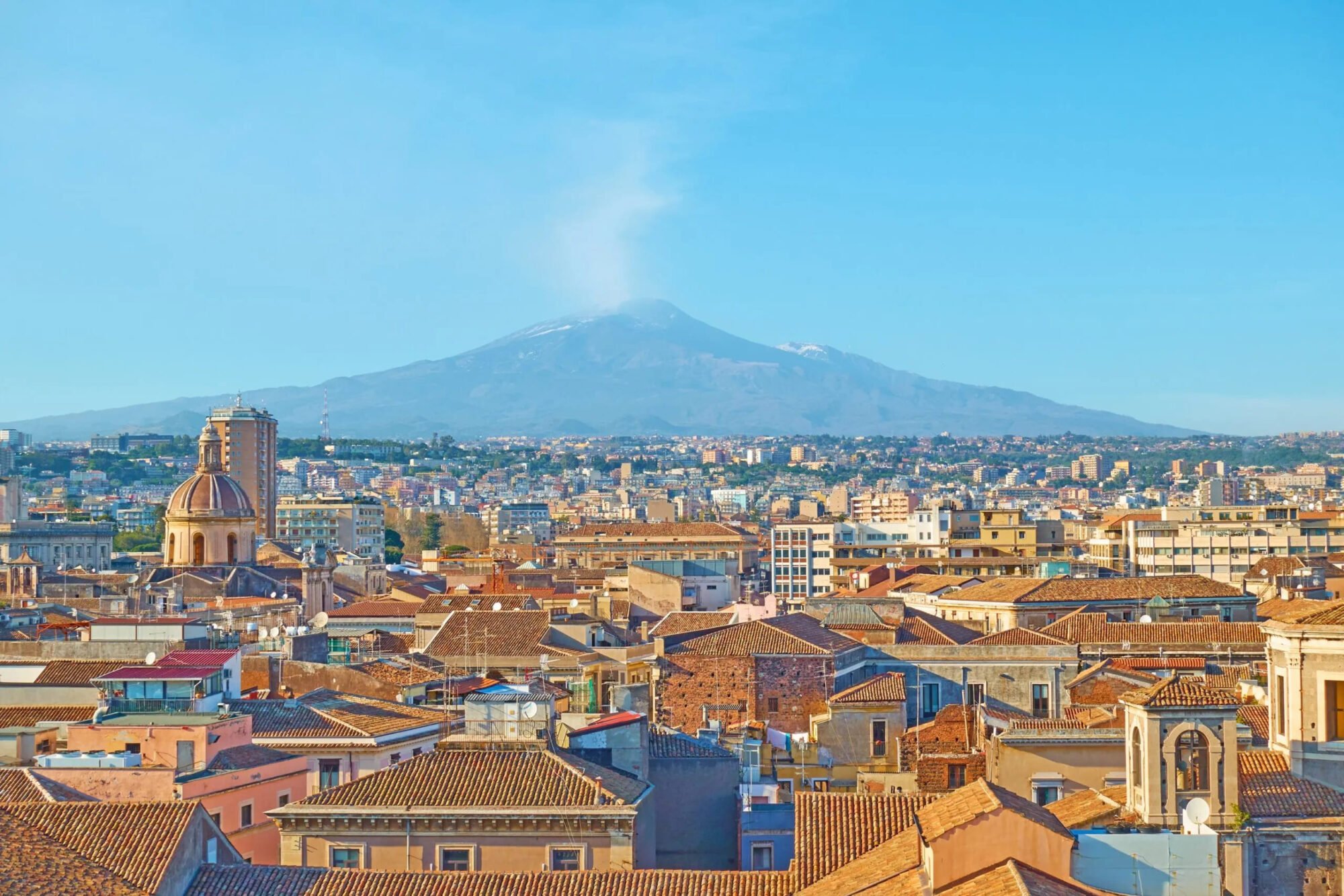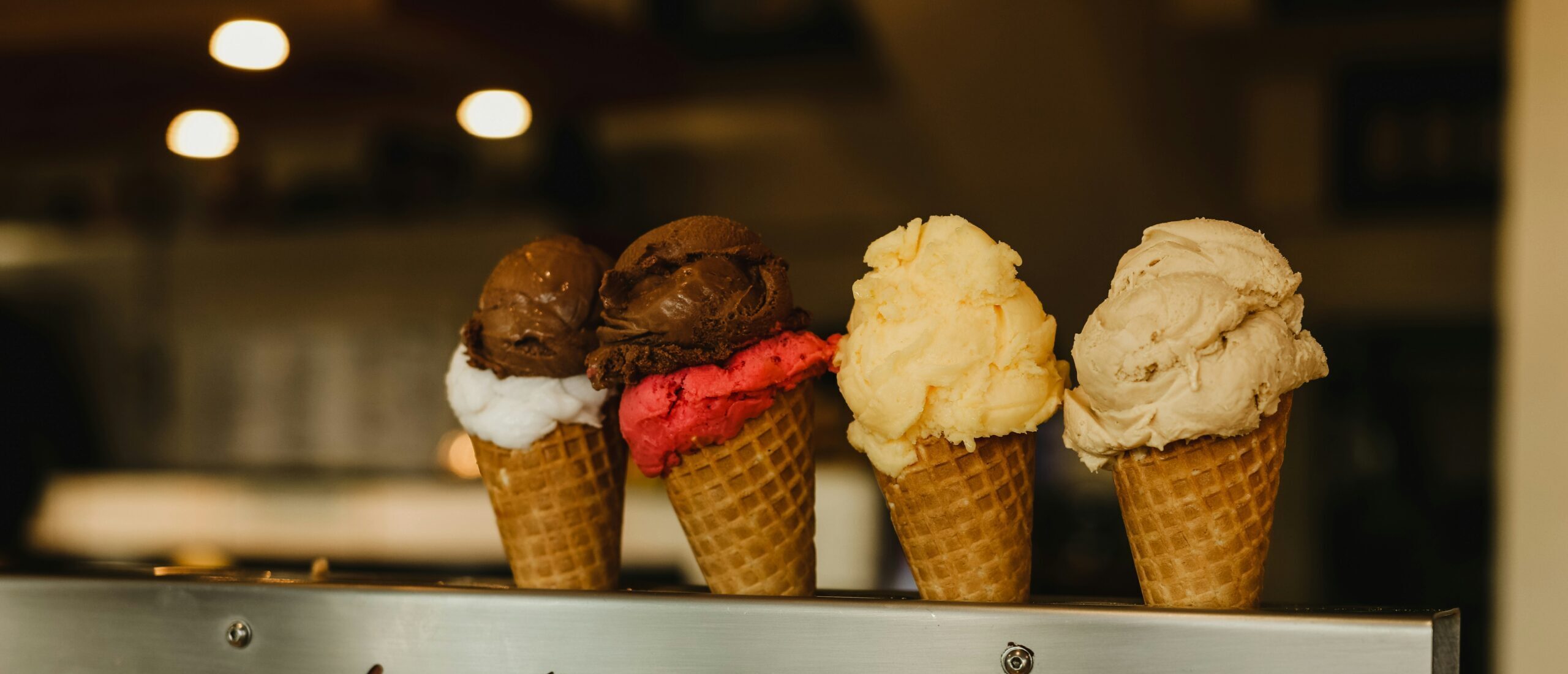Ciao from Catania, fellow travelers! It has happened! We have finally reached Sicily, the southernmost part of Italy and the largest island in the country. This region boasts a rich history and culture, Baroque architecture, and fantastic beaches. It is also the origin of the famous Sicilian pastry, Cannolo. In this article, we are going to talk about the best things to do in Catania in one day.
What to see in Catania in one day:
1. Benedictine Monastery of San Nicolo l’Arena
7. Roman Amphitheater of Catania
Quick Facts
The Sicilian heritage is so diverse and rich due to the many cultures that settled on the island. Catania is a prime example of this blend of cultures. The city was founded in the 8th century BC by the Ancient Greeks, then it became part of the Roman Empire. After its collapse, it became part of the Byzantine Empire. Around 900 AD, Catania was part of the Arabic Islamic Emirate of Sicily. The Arabs referred to Catania as the “Country of the Elephant” and “the City of the Elephant,” likely referring to the ancient lava sculpture now placed over the fountain in Piazza Duomo. Then the city was captured by the Normans. In the 13th century, it was conquered by the Germans, who built the famous Ursino Castle. In the 16th century, Catania became part of the Spanish Empire. Finally, it became part of unified Italy in 1861.
Catania is often referred to as “the city of Black Stone” due to the extensive use of black lava stone from Mount Etna in its architecture.
The historical center’s architecture is characterized by a late Baroque style. This is because the city was completely destroyed by a devastating earthquake in 1693. Afterward, the city was entirely rebuilt in the dominant architectural style of that era and region.
Itinerary
We flew to Catania from Bologna, which is probably the best way to reach the city from any other part of Italy unless you prefer very long road trips and using a ferry. By the way, don’t forget to check our lovingly crafted guide to Bologna.
Catania is not a small city; however, the historical center can be covered on foot if you rent an Airbnb or hotel room in the center, as we did. If you decide to visit Mount Etna, you will definitely need a car. Since we were planning to explore other cities and towns in the eastern part of Sicily, we rented a car at the airport.
1. Benedictine Monastery of San Nicolò l'Arena
Italian: Monastero dei Benedettini di San Nicolò l'Arena
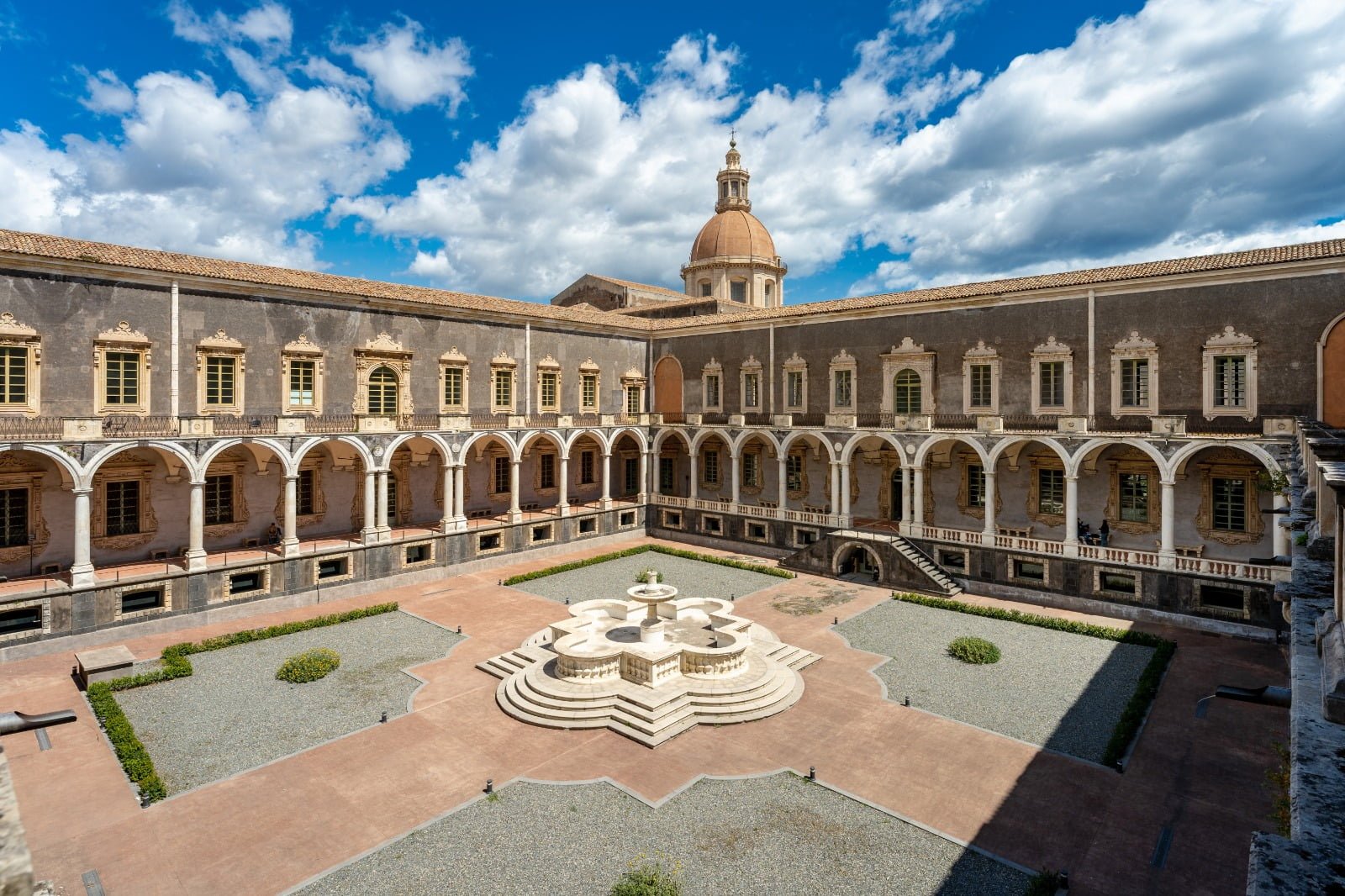
Our first stop in Catania is the Benedictine Monastery. This monastery is a jewel of late Sicilian Baroque. Founded by Benedictine monks in 1558, it was modified by the lava eruption in 1669 and again by the earthquake in 1693. Now UNESCO-listed, the complex is part of the University of Catania. So why visit? The main reason is to admire its beautiful Baroque architecture, featuring balconies supported by gargoyles. Enjoy the gorgeous interior with long corridors, rooms decorated with frescoes, and a garden built on lava. You can also visit the Roman domus in the basement and the Ursino Recupero library. In order not to miss anything it is preferred to book a 1.5-hour guided tour here.
Opening Hours: daily from 10.00 AM to 12.00 PM and from 2.00 PM to 6.00 PM. Important! Tours in English are arranged at 1.00 PM and 3.30 PM.
Ticket Price: standard ticket – 10€, students – 6€, young people under 19 – 3€, free for children under 7.
2. Ursino Castle
Italian: Castello Ursino
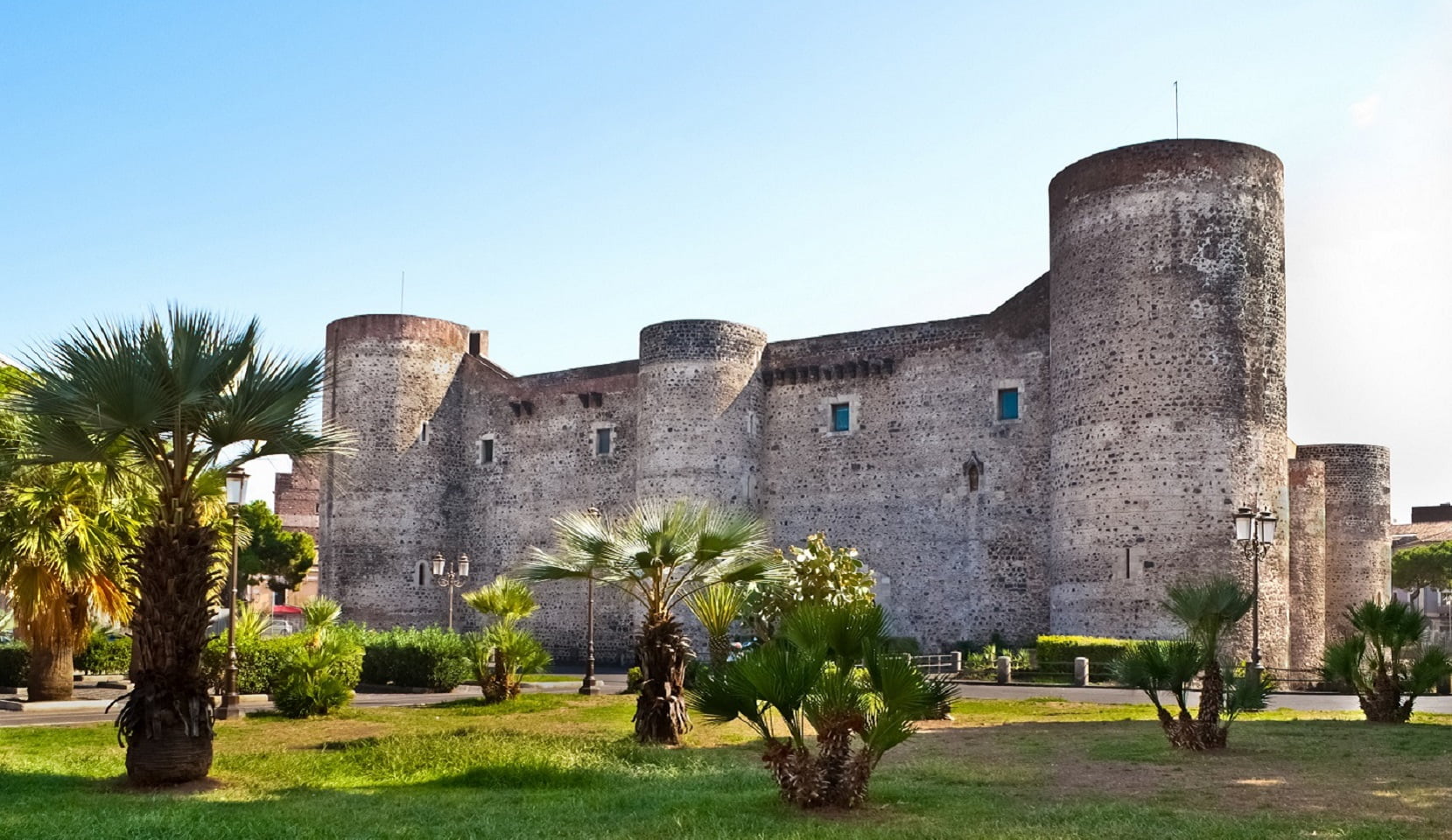
Our second stop the Ursino Caslte is just in 10-minutes walk from the Monestry.
Castello Ursino (Sicilian: Casteddu Ursinu, meaning ‘Bear Castle’), also known as Castello Svevo di Catania. Built in the 13th century as a royal castle of the Kingdom of Sicily, it stands as one of the few buildings that survived the devastating earthquake of 1693. Today, it has been converted into the Civic Museum (Museo Civico).
The museum exhibits artifacts and artworks not only from the castle itself but also from the wider geographical area, spanning from the Classical era onwards. These exhibits provide insights into the diverse influences that have shaped Sicilian history.
Within the castle, visitors can explore archaeological materials excavated in Catania and from family estates near ancient Camarina, as well as acquisitions from Naples, Rome, and Florence. Highlights of the collection include splendid Attic vases, archaic terracottas, and a significant group of bronzes.
The art gallery features notable works from the 17th and 18th centuries, including masterpieces by Matthias Stomer such as “Death of Cato,” “Crucifixion of St. Peter,” “Suicide of Seneca,” and “Christ Mocked.” It also showcases works by Pietro Novelli, including “St. Christopher,” “St. John the Baptist,” “Madonna and Child with St. Louis of France,” and “The Good Samaritan.”
A fascinating detail: the museum houses the only surviving copy of Caravaggio’s “Nativity with St. Francis and St. Lawrence,” created in 1627 by Don Gaspare Orioles da Paolo Geraci, as the original was stolen by the Mafia and has never been recovered.
Opening Hours: daily from 9.00 AM to 7.00 PM.
Ticket Price: 6€
3. Lunch: Catania Fish Market
Italian: Pescheria di Catania
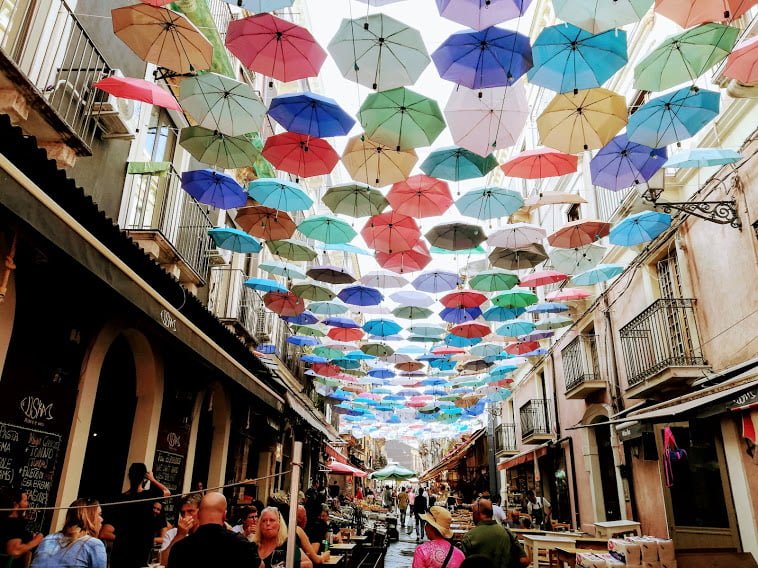
Just 6 minutes from Ursilo Castle, we will find the famous Catania’s Fish Market, Pescheria di Catania. It is among the oldest markets in Sicily. Nestled right behind Piazza Duomo, is a chaotic, colorful place showing the real city’s essence.
If you want to soak up in the market’s authentic fish trade atmosphere you need to come here in the morning. Our goal here is to find a place to have lunch with either some traditional Sicilian dishes or taste freshly caught fish.
One of the places we really loved for its simplicity, friendly owners, and amazing food was the Antica Rosticceria Catanese dal 1907. Check the location here.
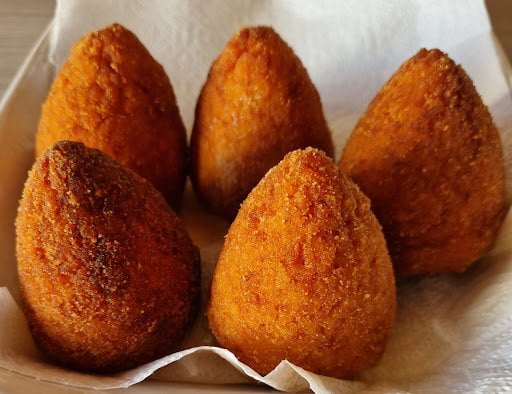
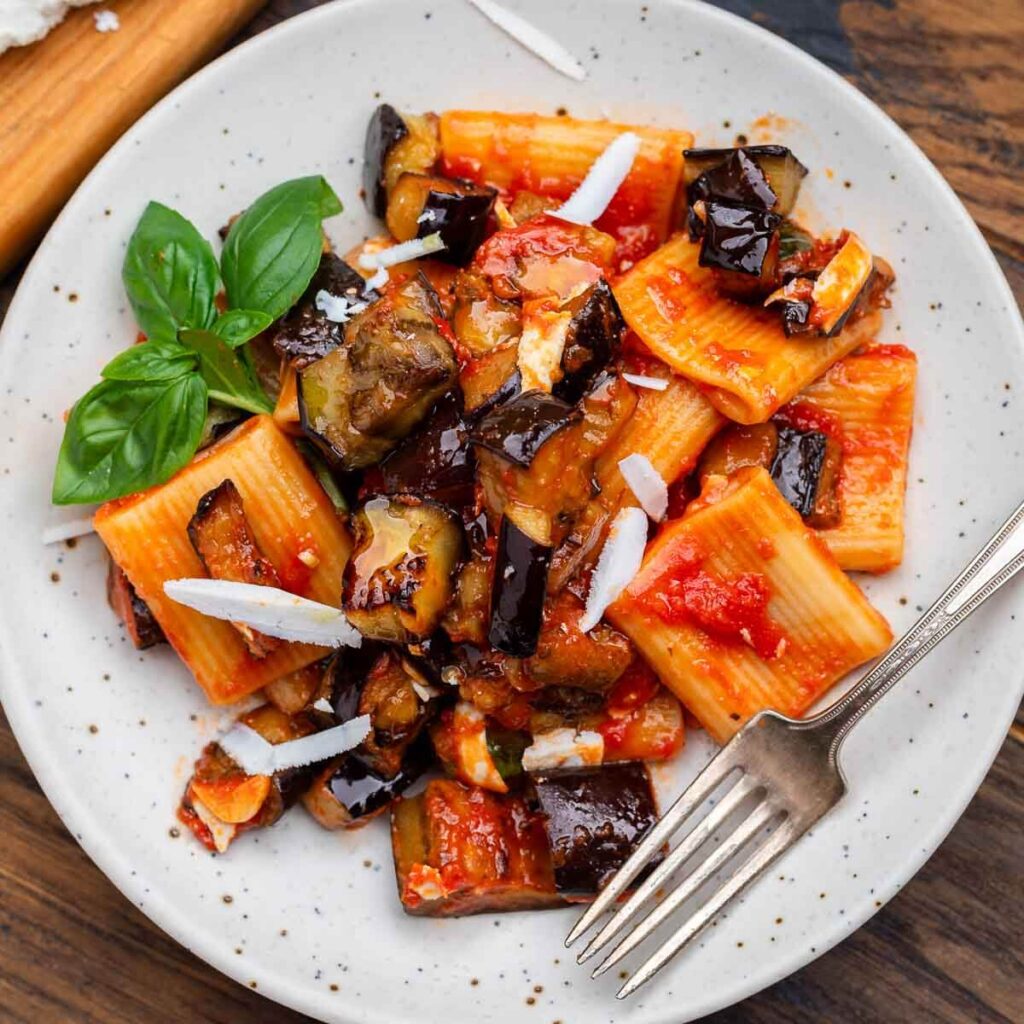
Antica Rosticceria is not a fish restaurant, however here you can try some local Catanese dishes like arancini and pasta alla norma of fantastic quality and super cheap.
Opening hours: 7.00 AM – 5.30 PM
Average spend per person: 10€
If you want to go a bit more fancy, go for L’iska Catania – a fish restaurant just opposite the Rosticceria. Here you can get all types of local seafood from octopus to mussels.
Opening hours: 11.30 AM – 11.30 PM
Average spend per person: 20-30€
4. Cathedral of Sant'Agata
Italian: Basilica Cattedrale di Sant'Agata

The Basilica Cattedrale di Sant’Agata, also known as the Cathedral of Sant’Agata, is one of the most significant and historically rich landmarks in Catania, Sicily. This cathedral is dedicated to Saint Agatha, the patron saint of Catania.
In my opinion, it is one of the most beautiful Catholic churches I’ve ever seen in Italy, largely because I am a fan of Baroque architecture. It is simply gorgeous!
The cathedral’s origins date back to 1078-1093 when it was originally constructed on the ruins of Roman Achillean Baths following the Norman conquest of the island.
The cathedral has been rebuilt multiple times due to damage from earthquakes and volcanic eruptions. The current Baroque structure largely dates from the 18th-century reconstruction following the 1693 earthquake.
The cathedral houses the relics of Saint Agatha, including her veil and a bust containing her skull. It also contains the tombs of several notable figures, including the Aragonese kings of Sicily and the composer Vincenzo Bellini, who was born in Catania.
Opening Hours: 7:45 AM – 12:30 PM, 4.00 – 7.00 PM
Ticket Price: free
5. Fountain of the Elephant
Italian: Fontana dell'Elefante
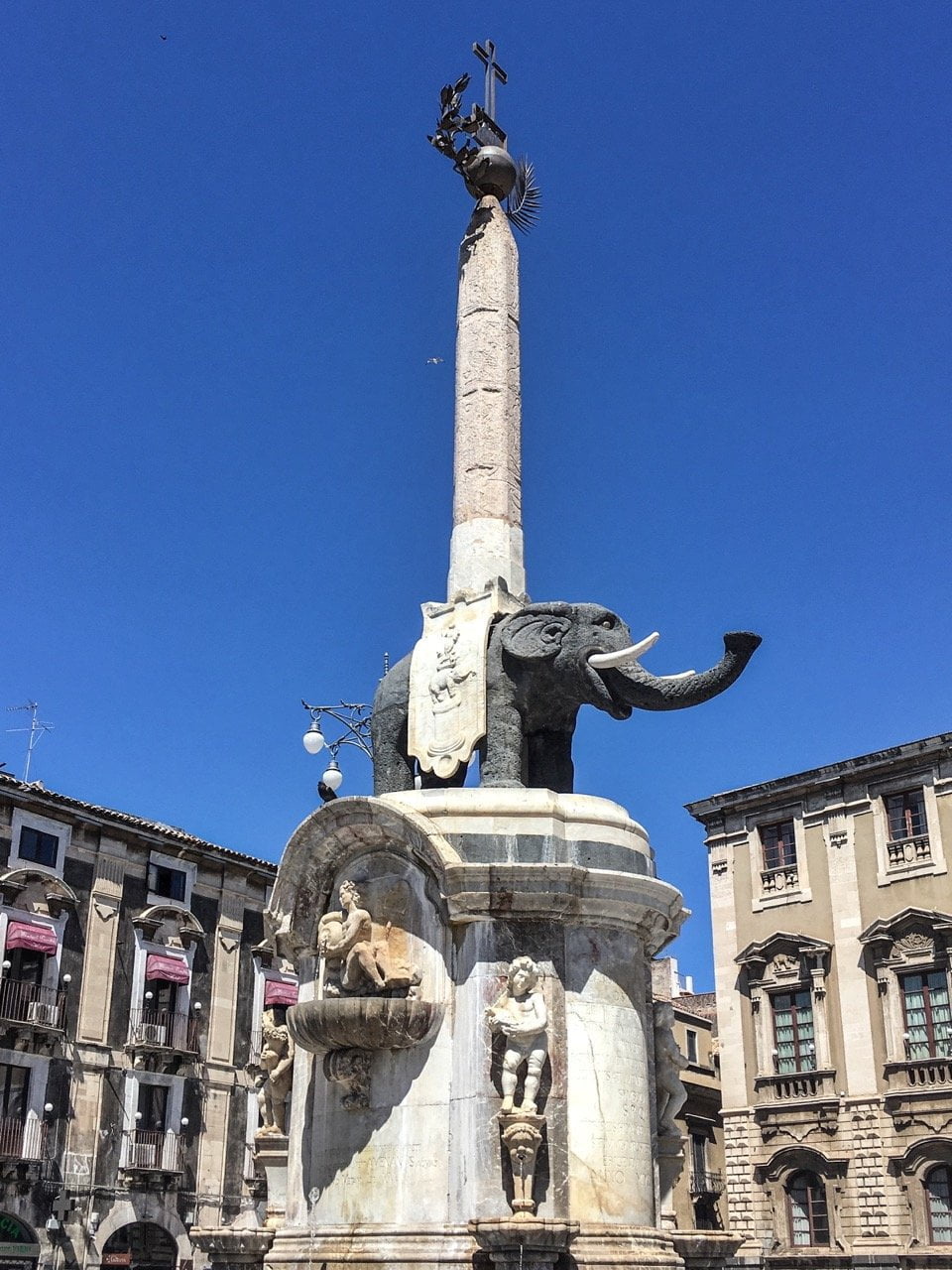
Just opposite the Cathedral of Sant’Agata in Piazza Duomo, you’ll find a mysterious symbol of Catania: the Fontana dell’Elefante or Elephant Fountain. The fountain is one of Catania’s most iconic landmarks, steeped in local legend.
The Elephant Fountain was designed by Giovanni Battista Vaccarini, a prominent Sicilian architect, in 1736. The fountain features an ancient black lava stone elephant, which is believed to date back to Roman times. This statue is known as “Liotru” and is a significant emblem of the city. The elephant carries an Egyptian obelisk on its back, made of granite and standing upright, adding to the fountain’s exotic and historical allure.
Local legend suggests that the elephant statue has magical powers and was once used by a wizard named Heliodorus (hence the name “Liotru”) to travel swiftly around the city and protect it from harm. Another tale claims that the elephant was carved by an unknown sculptor in ancient times and has been a protective symbol ever since.
6. Massimo Bellini Theater
Italian: Teatro Massimo Bellini
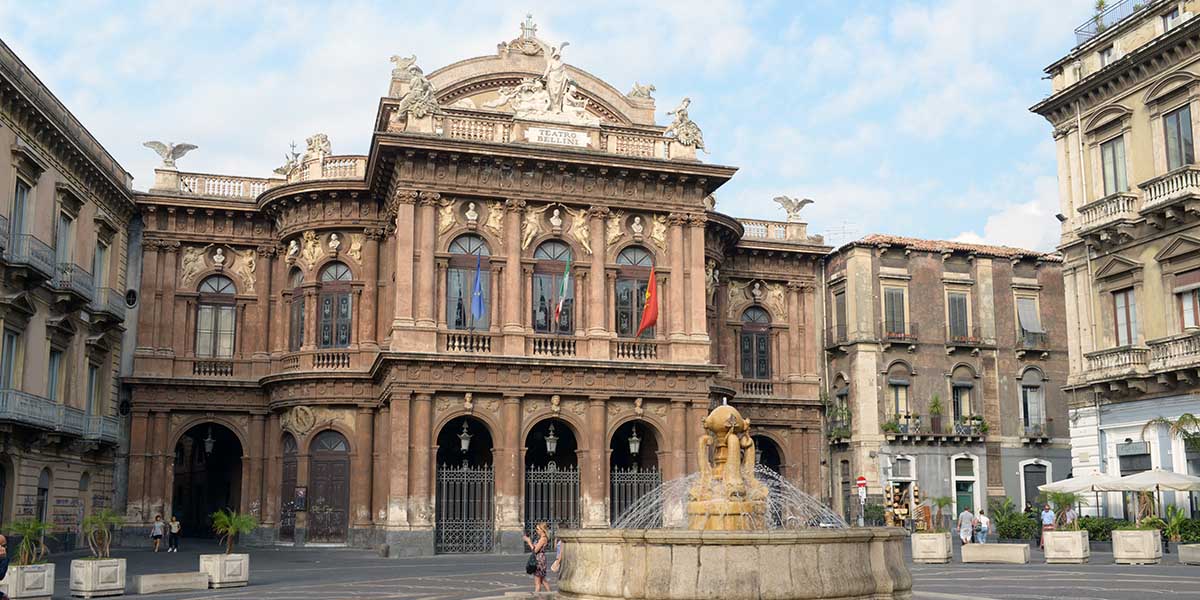
Being just 10 minutes away, we couldn’t miss another masterpiece of Catanese architecture. Teatro Massimo Vincenzo Bellini is not just an architectural gem but also a cultural landmark. Named after the famous composer Vincenzo Bellini, who was born in Catania, this theater is an opera house of great historical significance.
Construction of the theater began in 1870 but faced numerous delays due to funding issues and logistical challenges. The project saw multiple architects involved before it was completed by Carlo Sada. The facade of the theater is designed in the Neoclassical style, with intricate details and symmetrical elements that give it a majestic appearance.
Teatro Massimo Bellini is a major center for opera in Italy, regularly hosting performances of both classical and contemporary works. The theater is open for guided tours, which provide insights into its history, architecture, and the life of Vincenzo Bellini. You can check more information about the theater’s events here.
7. Roman Amphitheater of Catania
Italian: Anfiteatro Romano di Catania
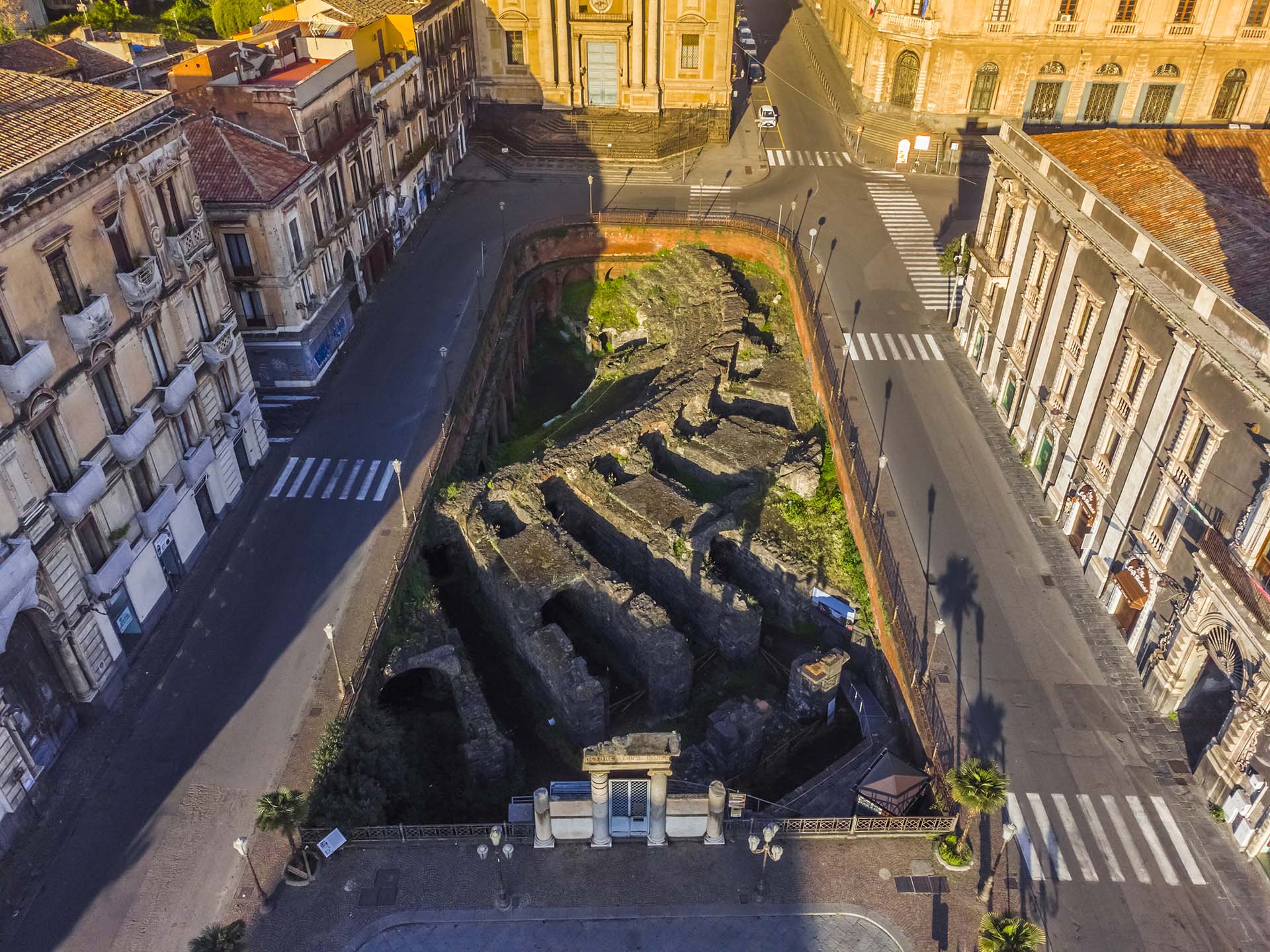
Next, we are taking a 10-minute walk towards the Roman Amphitheater of Catania. Built in the 2nd century AD, the amphitheater is the most complex and largest of all the amphitheaters in Sicily. It is one of a group of large Roman arenas in Italy and has a very intricate structure.
Unfortunately, only 10% of its structure is visible, so most of the amphitheater’s secrets are still buried underground. You can still get a glimpse of the scale of this structure by observing just a part of it. It is generally open to the public for visits, though it might be closed for reconstruction. However, you can see most of it from the outside. For more information on guided visits, you can check here.
8. Try the best Sicilian cannoli at Pasticceria Sottile

Another important stop in our guide to Catania: Sottile bakery, just a 10-minute walk from the arena.
It is the kingdom of Sicilian cannoli. You can skip any point of our itinerary except for this one. The bakery offers a wide selection of different cannoli from the traditional plane ricotta ones to the ones with dark chocolate cream. Here I’ve tried the best cannoli ever. You can chill at the bakery itself enjoying your cannoli with a cup of coffee or a cappuccino. Or take it away and enjoy it at our final stop for the day – at the Bellini Gardens. And don’t worry, even if its late afternoon here at Sottile bakery they wouldn’t mind making you a cup of cappuccio to go!
Opening Hours: 6.00 AM to 9.00 PM, 6.00 AM to 3.00 PM on Sundays. Closed on Tuesdays.
9. Villa Bellini Garden
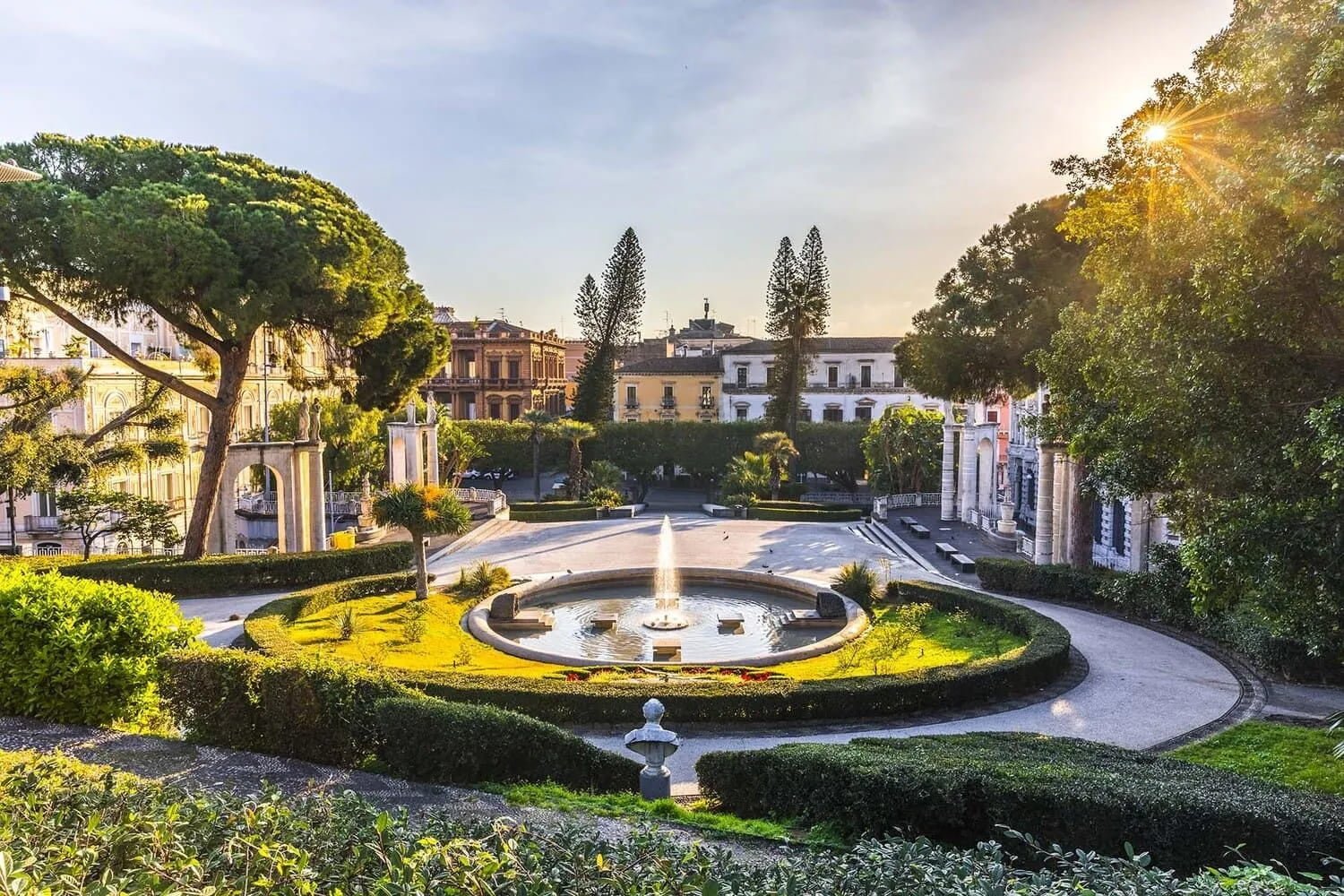
This garden is a wonderful place to sit on a bench in the shade and take a break from exploring Catania. It’s the perfect spot to relax and savor your cannoli. Plus, if you are lucky with the weather, you can enjoy a stunning sunset with a view of Mount Etna from here.
Opening Hours: daily from 7.00 AM to 8.00 PM
10. Dinner: SVRGO Restaurant
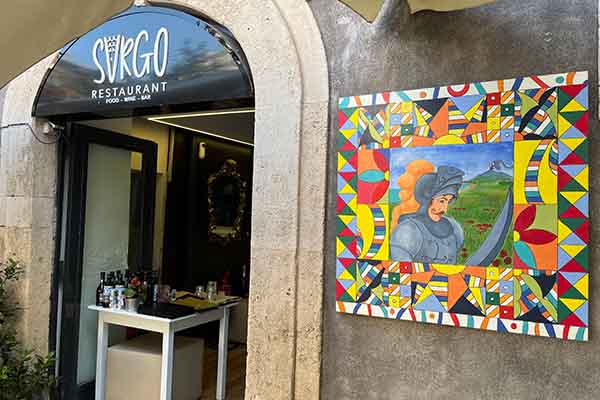
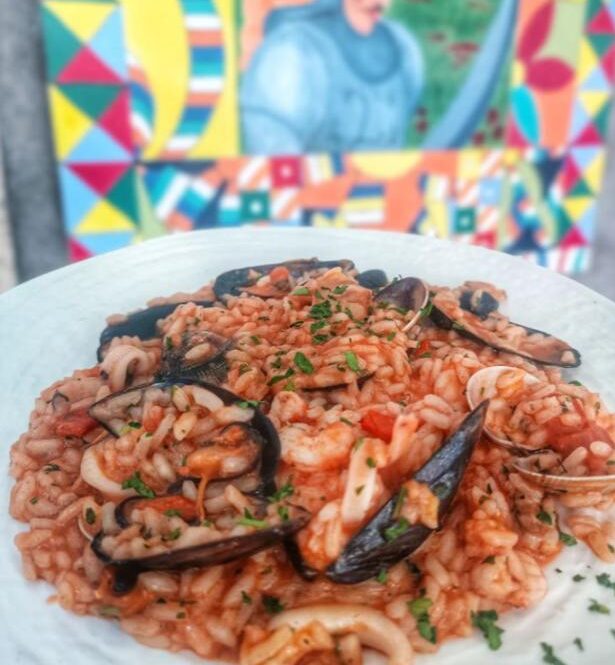
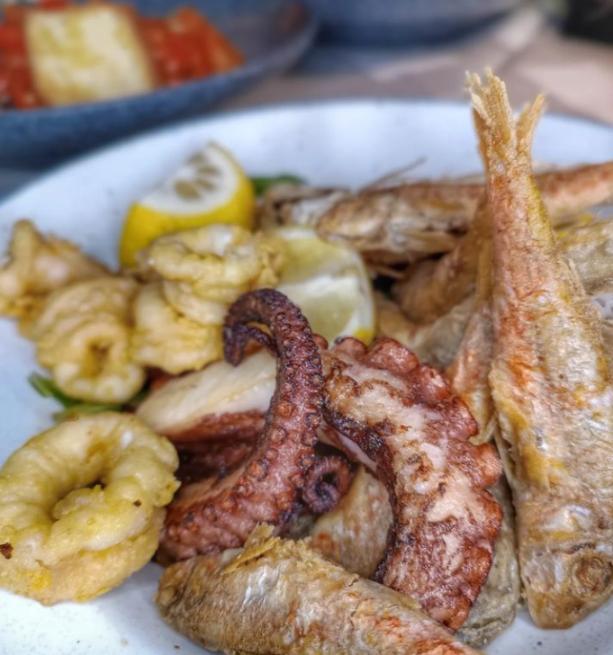
Enjoy your meal and buon appetito!
Opening hours: 12.00 PM – 11.00 PM
Average spend per person: 30-40€
Summary
Do you know where to try the best gelato in Bologna?
Check our guide to the sweetest spots in town!
You might have heard about the 7 secrets of Bologna, but what about the 7 best gelaterias to visit while you’re in the city? Bologna’s ice cream mastery is among the best in Italy, if not the best! With
